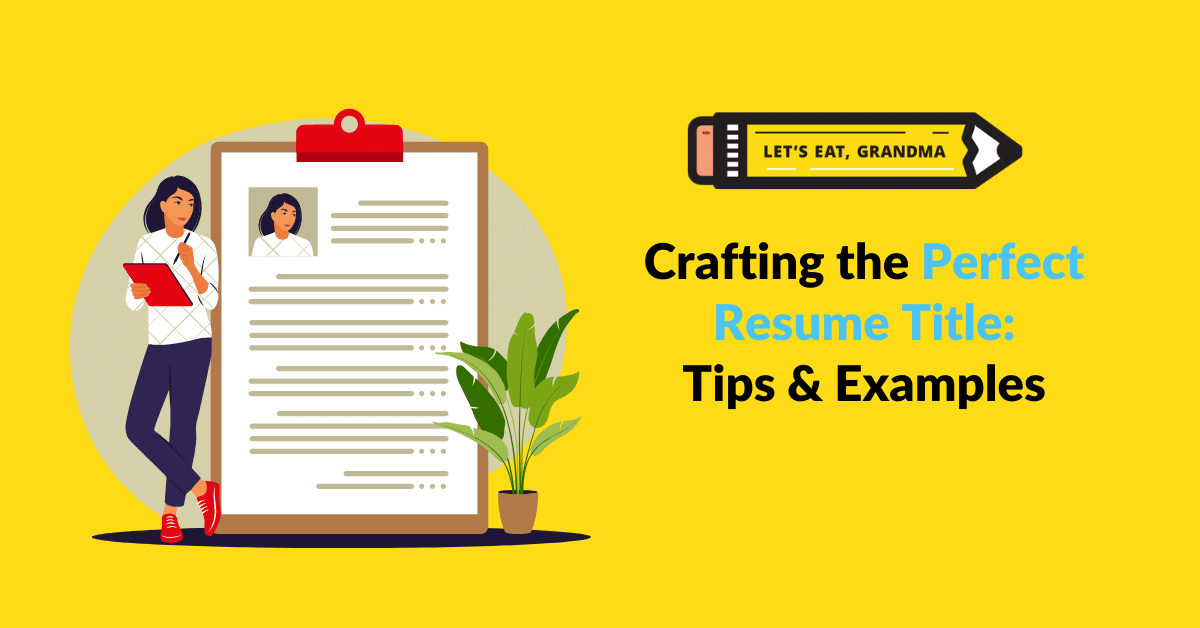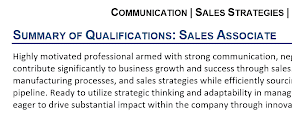When you think about writing your resume, chances are, you probably jump straight into thinking about how you’ll write your experience section. At most, you may also consider how you’ll write your Summary of Qualifications section.
While you’re right in focusing on these sections because they’re definitely important to get right, you’re also skipping one crucial part of your resume (and you’re not alone – this section is often overlooked), which is the resume title or resume headline.
However, the great news is that crafting a perfect resume title is far from complicated, especially considering the impact it can have on getting potential employers to give your resume a closer look.
In this guide, we’ll walk you through everything you need to know about getting your resume title right, including tips and examples to help you out.
What is a resume headline/resume title?
Not to be confused with a resume header (the one that contains your name and contact information), a resume headline or resume title is the first line of content that appears at the top of your resume, just below your header.
The resume headline or resume title consists of two main elements: your job title and underneath it, your 3-5 core skills or expertise areas (optional but highly recommended):
Why is a resume title important?
In one simple line, your resume title can communicate to potential employers, “Hey there, I’m exactly who you’re looking for!” This is especially if you make it a point to tailor your title to match the job you’re applying for. For instance, if you’re applying to a “Customer Associate” position, your resume title should be “Customer Associate”.
The reason why this matters is that recruiters often use the job title as a keyword; i.e., they search for resumes that contain the specific job title they’re hiring for. By including your desired job title in your resume title, you’ll guarantee that you’ll pass through ATS (applicant tracking system) filters and even manual searches that recruiters conduct on job portals or databases.
Your goal isn’t only to impress the robots, though – you’ll also simultaneously be making the best impression you can on the humans reading your resume (recruiters, HR managers, or anyone else involved in the hiring process).
There’s nothing worse than getting halfway through a resume and still not knowing what the candidate is qualified for or looking for in their next position.
Simple move, but a powerful one!
Best practices for your resume headline
Now that you know what the resume headline is and why it’s a can’t-miss element of your resume, here are 3 best practices to keep in mind when crafting your own.
In many cases, you may be under the impression that just because the exact job title is already mentioned in your professional experience, there’s no need to repeat it in your resume title.
However, that’s not necessarily the case because there’s no way to guarantee that recruiters will make it to your work experience section. As such, always highlight the job title on the top to identify yourself as someone in that role right away.
But what if you don’t have that job title in your professional experience? In this case, the resume title or resume headline is the best way to incorporate the job title’s keyword in your resume. Otherwise, you risk your resume getting overlooked by the ATS, which could lead to missing out on potential job opportunities.
Finally in both scenarios, at Let’s Eat, Grandma, we highly recommend adding your core expertise underneath the job title in your headline. This further solidifies your skills and qualifications and positions you as a great match for the position.
Simply pick the top 3-5 skills that align with both the job description and your experience and write them underneath the title, separated by a pipe (|).
Resume title tips if you don’t have experience in the role you’re applying for
Many people feel awkward or not so sure about the idea of making their resume headline a job title that they never held in their professional experience. This is especially common among career changes and fresh graduates, but also applicable to anyone applying for a position they have limited experience in.
If this sounds like you, here are 3 headline resume ideas to address this:
1. Include the Word “profile” after the resume title
The first idea is to add the word “profile” after your resume title. Let’s say you’re applying for a Sales Associate position, but you’ve never held that job title before, you could title the resume “Sales Associate Profile.”
This approach allows you to use the essential keyword “Sales Associate” in your resume’s headline while clarifying that the document serves as a summary or profile of your qualifications for the position, rather than suggesting you’ve already held that job title.
2. Include the job title in a section header
The second option is to entirely drop the job title from your resume headline (keeping the 3-5 core areas of expertise only) and, instead, include the job title in the Summary of Qualifications section header.
Simply add a colon followed by the job title you’re applying for:
In this case, your resume headline becomes more general and focused on highlighting your skills and experience rather than a specific job title, but your job target is still clearly stated in the summary of qualifications section.
3. Integrate the job title in your Summary of Qualifications
The last option is to again skip the job title from your resume headline (keeping the 3-5 core areas of expertise only), and instead mention it in the first line of your summary of qualifications section.
Here are 2 examples of how you can integrate your title into your summary of qualifications:
-
Aspiring [Target Job Title] committed to [Relevant Industry] Excellence.
-
Honors Graduate with a Passion for [Industry] and a Drive to Excel in [Target Job Title].
Both of these don’t make any claims that you’ve already had the job title, but they do make it clear that your goal is to become one.
Conclusion
The best resume headlines are those that are well-crafted and ATS-optimized. Make sure yours are too, because they can go a long way in getting your resume past the initial ATS screening and into the hands of a human recruiter.
On top of that, they make the right first impression, and that’s priceless given how little time recruiters spend reviewing each resume in today’s digital job hunting world.
If you’ve noticed how we’re saying “they” and not “it.” That’s because we have one final tip for you: remember to refine your resume title for every job you apply for.
You may be applying to the same job (technically), but different companies use different job titles. By tweaking your resume title slightly to align with the job posting, you’ll increase your chances of getting noticed and shortlisted.
P.S. If you need a pair of eyes on your resume title or the whole document to make sure you’re ticking all the right boxes, you’ll love our free resume review service. Personalized feedback from a real expert can point you in the right direction and give you peace of mind.
Happy job hunting!
Ready for more job search help?
Sign up for a free Senior Writer Resume Critique to see what’s holding you back from landing interviews. One of our top professional resume writers will give you personalized feedback on the top 3 items you can improve based on our expert practices!







